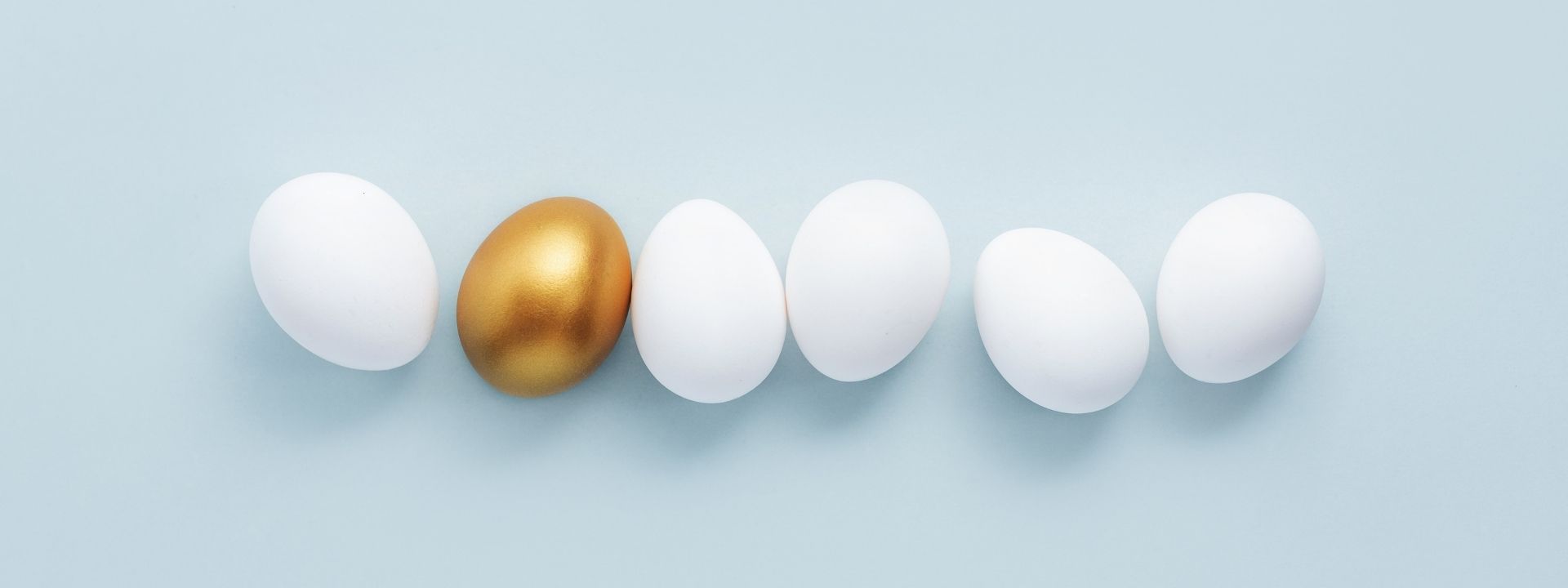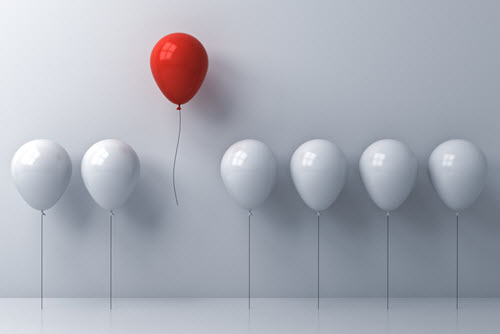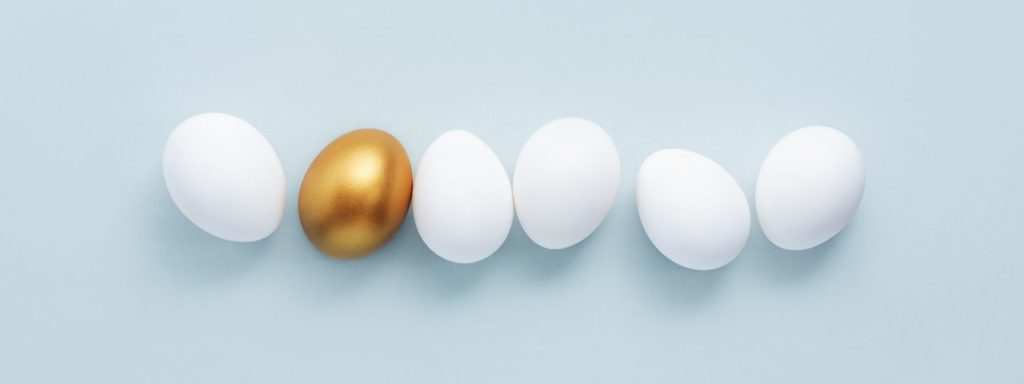
TIP OF THE WEEK #004 | The 3 pillars of differentiation
February 25, 2022
We spend our time talking about differentiation. But definitely, this notion isn’t clear and terribly abstract.
By definition, we are all different. As a human being of course, and as a brand. And by our name or our logo. However, there are still terribly many of us who do not highlight these differences, while in many areas, they are the only ones that really allow us to stand out.
On the other hand, we’re all kind of the same, both as a brand and as a human being. We have the same vital needs, the same functionalities and the same desires to grow.
So what makes you more attracted to a person, to a product? What creates magic and alchemy, which speaks to our heart or to our reason?
Over the years, I have noticed, both by reading and in the field, that there were 3 main reasons why a normally constituted person would go for a brand rather than another. Over time, I was able to develop this theory and refine it, and above all share it around me. Yet it is obvious when we talk about it, and despite this, so many of us do not take it into account!
There are 3 main axes, which I call pillars in that they support a brand. Three ways to differentiate yourself, to stand out, to bring something else. Three ways to express your brand, to attract a prospect, to be chosen.

THE PRODUCT ITSELF
It’s obvious, isn’t it? If you have a product that no one else sells, you will necessarily have the best place on the market. Before being copied; what will happen, as with all innovative products or services.
Being different by the product has many advantages, but also many disadvantages
+++ No competition
By definition, if you create a completely new product, you create your own market at the same time. Just like the first iPad, GPS or even social networks, there was a time when they did not exist, and yet the world was turning. Today, we could no longer live without them. These products arrived on market, and created their own demand. Of course, we don’t create concepts that change the world like these every week, but think of pregnancy or newborn sessions, which have created their own market and tickled a demand that no doubt existed but did not know how to verbalize. The opportunities are everywhere, you “just” have to be creative and see in which area there is a lack that we can fill.
+++ No quality comparison
I agree, it’s a big debatable. But the certainty is that when you have nothing to compare a product to, it is bound to be the best. Arriving on a market empty of competitors also seems to be an opportunity to BECOME the point of comparison. Might as well set the bar as high as possible from the start, so as not to make it easier for others who would have no problem doing better!
+++ No price comparison
Let’s be honest, it will only be a while. But at least initially, the price is up to you. This is called “supply and demand”. If you have a high demand for a product that you are the only one to supply, you are in control of the price and it is then up to the highest bidder.
– – – The copy
In a world that is more open than ever and with relative borders, blurred by the magic of the internet, it will probably be enough to count to 3 before someone on the other side of the world sees your product or service and does not hasten to do the same thing, if not better, and probably for less. If your service has a geographical aspect, chances are that the impact will be limited (at first), but it will quickly be undeniable that you will no longer have a monopoly on your own market. As much as it can be confusing, if you have a challenging spirit, it can push you to surpass yourself and always be in creation. The important thing is not to let yourself be eaten away, but to always be one step ahead. Being copied is as rewarding as it can be heartbreaking at times. But once the sigh has passed, you have to keep looking ahead. The copied idea is already long outdated, and you are already on the next one.
“Take my ideas, I’ll find others” Coco Chanel
– – – The anti-novelties
I’m sure you know some. Especially in France (come on, let’s be a little teasing), those people who, on principle, are against it. Especially if they haven’t tried the product, or haven’t gone to the place in question… I’ve lost count of the number of people who have said to me “Dubai sucks, it’s superficial and soulless!” and when I ask them if they’ve ever been there, “No, but I see it on TV”. Either…
Launching a new product or a new concept is going to mean coming up against this type of person. Certainly the same ones who told you that it was totally crazy, unreasonable and irresponsible to get into entrepreneurship. However, you have taken the plunge (a priori, since you are reading this book!). Well it will be the same for the creation of a product or an innovative concept. Because these people are only there to vent their own frustration and failures on those who change the world.
– – – Wipe plasters (french expression)
To be the first, or to have a truly different product, is also to make all the mistakes for the first time, because no one will have made them before you. As much as this can be a must and considered an experience to be acquired over time, it can also allow your future competitors to watch you row in semolina so that they only have to follow in your footsteps. Just as Yahoo was THE search engine and did all the consumer testing for its mere existence, Google then took note of all of this to launch itself and become the leader it still is today.
There are many examples (Nokia/Motorola then iPhone, MySpace, etc.) of brands that were leaders for a while, but failed to take into account customer feedback or renew themselves, and were eaten up believed by dint of sitting on their laurels (all this is of course more complicated than this ultra simplistic approach, but the idea is there).
Let’s therefore assume that we have an equivalent product or service, in other words, as far as we are concerned, that our photo or video images are of rather good quality. In the midst of thousands, millions of professional photographers and videographers around the world creating quality images every day, and adding to that all the sometimes better amateurs, how to differentiate yourself? Why would a customer choose us, rather than another, if the product is not what will make the difference?
“Price is what you offer when you don’t have anything else” John R. Dijulius

THE PRICE
Here’s a great topic! Still, I think the quote above pretty much says it all. When you come to say to yourself that the only solution to succeed in selling your product or service, or winning a contract, is to lower the price again and again, it is definitely that you have, a priori, no other way to be different and more attractive for the prospect, compared to his competitors.
Make no mistake, having low and competitive prices, and playing on this axis, can also be a choice, and there is definitely (and almost unfortunately) an increasingly large, wide and varied, for which the price is a decisive criterion in absolutely all acts of purchase. Supermarkets are certainly the best example, and generally, we find that the products necessary for survival are competitive, while the favorite products have prices that are sometimes totally crazy. Give me the price of the latest video game console? Yet countless people are willing to go into debt to buy one. The same goes for our mobile phones which often represent more than a month’s salary, as well as other luxury brands for which we are ready to save for months to indulge ourselves. But why?
Why should we sacrifice evenings with friends, small daily pleasures or tightening our belts in order to be able to indulge in one particular thing?
The reason is quite simple; the brand.
"Buying a brand is much more than a purchase. It's sharing with others that you are part of a community, a social class, or a category."

THE BRAND
I’m going to take the most telling and irrational example in my eyes, and of which I am a victim in my daily life.
I’m a #shoesaddict, which means I literally love shoes. Yet, compared to others, I know how to contain myself. But if I want to treat myself, it will often be through the purchase of shoes.
We agree that the product as such, a pair of shoes, can be found anywhere. And at absolutely all prices. And in all qualities; One does not always go with the other. Believe me, I have shoes bought for 10€ at the cheap shop and which are still in good condition after 5 years, while my last self-offered stillettos at Christmas from a brand with a red sole are already starting to fray. .
So even if of course, in substance, materials used, craftsmanship etc… are different, in fact, it is still shoes, fulfilling the same task as protecting the feet off the ground and, as a matter of fact, by being pretty.
However, we are ready to sometimes put several hundred euros in a pair of shoes. So why?
For the name, the signature, the brand, the values conveyed, the feeling felt when touching them, wearing them… (they’re still just shoes, aren’t they). This something that makes us dream, that makes us feel Woman, feel chic, feel unique and valued. All this in shoes. What magic power, isn’t it!
At the end of the day, these brands don’t sell shoes; they sell a feeling, an emotion.
When it comes to selling everything except your product, the prize goes to me, to perfumes. Have you seen a single perfume advertisement that explains the different scents of gasoline to you? Who shows you how easy the push button is to use? Or the number of hours the scent will stay on your skin? I don’t remember. And that’s good enough, because that’s not really what they sell (although I doubt that Chanel can create a perfume smelling of cow dung, although, with good marketing it seems that we can sell… all).
An advertisement for a perfume sells a state of mind, sells the parallel world in which one escapes by wearing it, the feeling of being more feminine, more masculine, stronger, irresistible, invincible, etc. A magical fragrance.
It’s up to us to be magical…
Under “THE BRAND” many things take shape.
It’s about the signature, the artist, but above all the communication that will have been made around this name.
I know (too) many excellent photographers and videographers, but who are artists before being entrepreneurs. They are extraordinary when they have their camera in hand, and are incredible technically, being able to spend hours shooting so much they are passionate. They sometimes invest fortunes in equipment but not always, and watch tutorials on the art of lighting or attend workshops on managing their camera in low light. Often, they know absolutely all the technical characteristics of the latest boxes on the market, and never utter the word “Marketing” because it is evil.
Often, they feel guilty asking their clients for money because their job is above all a passion, and they are the first to accept underpaid jobs, because in the end, you still have to pay your bills.
I know quite a few (too many) photographers and videographers with technically average work, or with a banal style, without any particular signature, see a few names that come to mind where I always try to understand how it is possible to sell this image type.
Already, and I repeat, all tastes are in nature and the levels of requirement are different. And it is a priori these case studies that are the most interesting to study. Because the art of selling an average product is a real skill. It is even more in this case that communication, marketing and customer experience will simply balance with the product itself.
Extracts From "L'experience Client" Edition 2022
LET'S BE IN TOUCH!
feel free to contact maddy to DISCUSS, TALK ABOUT YOUR PROJECT AND YOUR NEEDS!
CONTACT MADDY
Leave a Reply Cancel reply
Thanks, You'll be added to our newsletter
fOLLOW MADDY ON INSTAGRAM @MADDY.CHRISTINA.PHOTO
MADDYCHRISTINA
WEDDING PHOTOGRAPHER
fRANCE- middle east - iTALY
Merci pour tous ces conseils passionnants ! Je les ai sans doute lu dans “L’expérience client”, qui a vraiment été un ouvrage précieux pour aller plus loin dans ce que j’offre à mes clients en terme de service ! Si tu le publies de nouveau, je le recommanderai à mes collègues sans hésiter ! Elever le niveau de notre profession c’est tellement important 🙂
Bonne continuation à toi !